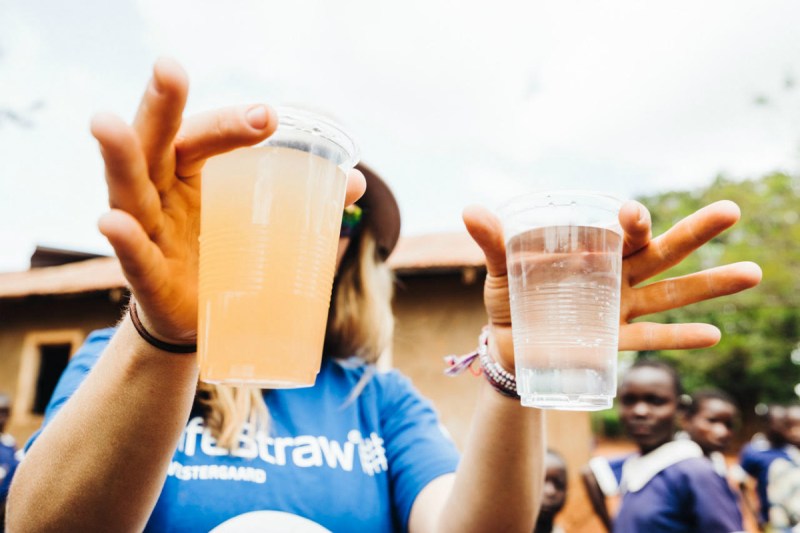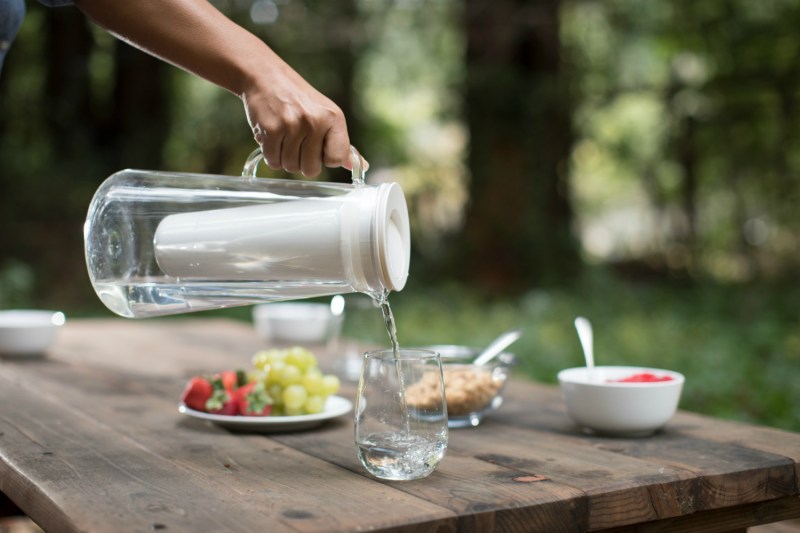We’re not about to drink directly from a backcountry stream without a legit water purifier. What do you think we are? Dummies? Increasingly, we need to adopt this same ‘duh’ mindset to our tap water, which likely contains dangerous chemicals, bacteria, heavy metals, and microplastics— which are super-fine pieces of plastic we ingest daily that are threatening our health in a major way.
Yup, microplastics are even in 90 percent of bottled water.
Two years ago, when a state of emergency was issued in Flint, Michigan, the reality that our drinking water could have anything from Coliform bacteria to lead in it struck an alarming chord. But tap water looks so clean… and my fridge has a filter in it… and aren’t there massive water treatment facilities dedicated to stripping contaminants and parasites before water gets to our glasses?
The reality is that most of us have no idea what chemicals are actually in our water, and how we can realistically go about making the water we do have as safe as possible to consume.
The Manual sat down with the Managing Director and Head of Brand at LifeStraw, Alison Hill and Tara Lundy— two brilliant leaders in the filtration category who set the record straight on chemicals, the growing emergency of contaminated tap water, and how we can drink the cleanest, healthiest H2O possible.

So, how bad is our water in the USA?
LifeStraw knows bad water. Their filtration solutions and technology have been designed to deal with the world’s absolute worst water sources in Africa and the backcountry.
“We saw that these issues were impacting US households,” Hill says. “After the Flint water crisis, researchers started looking at what was in our water and in recent years found that between 9-45 million Americans get their drinking water from a source that is in violation of the Safe Drinking Water Act.”
That means everything from microplastics to Chromium-6 (the ‘Erin Brockovich’ chemical), Chromium-3, lead, bacteria, parasites, and other heavy metals are hiding in plain sight. Mmm… refreshing?
“There are a number of contaminants infecting people’s tap water, and a lot of cases,” adds Lundy. Go ahead and Google “boil advisory” and you’ll find a rash of news articles from around the country relating to communities’ drinking water being contaminated with pathogens (i.e. bacteria and viruses that cause disease). “[These] advisories may last for days or weeks, and it’s increasingly a problem as we see more hurricanes and natural disasters,” Lundy says.

How does water get infected?
Microplastics, heavy metals, and bacteria can enter our drinking water a number of ways. While microplastics leech from the jackets we throw in the laundry into groundwater sources, agricultural runoff drains pesticides into that same source, and heavy metals and other contaminants leach from the actual water systems in houses and municipalities. This was partially the case in Flint, where miles upon miles of iron, copper, and lead pipes had been corroded.
America’s overarching water infrastructure is rife with challenges that will likely result in increased emergencies and water safety issues in the coming years, says expert water correspondent Codi Kozacek.
Is our water making us sick?
“Parasites lead to gastrointestinal problems, lead has an impact on childhood development, and early data suggests exposure to levels of chromium leads to different kinds of cancers and neurological disorders,” says Lundy. “Exposure to any one of thousands of contaminants can lead to one of thousands of problems, but we don’t know everything yet.”
The true health impact of contaminated water is still under scrutiny, but what we can say for a fact is that an issue like microplastics being pervasive across all our water sources is so alarming (our contamination rate is freaking 94 percent) the World Health Organization launched an emergency initiative task force to look at the impact, says Lundy and Hill.
Guess we’ll be drinking sparkling tequila water in the meantime.

How do we get contaminants out, like, today? … and is my dinky filter doing anything?
Water treatment facilities are set up to address large contaminants, “and they do it with chlorine,” says Hill. Lundy chimes in that this is the main way municipalities improve their water, and in some areas, you can fill a glass of water from the tap and it will smell like a pool.
Odds are, the water filter you’re using at home is primarily working to remove chlorine. “A lot of refrigerators have built-in filters, so they’re better than the tap, but these baseline filtration products are concerned with improving taste and they do that by removing chlorine,” says Hill.
Removing bad bacteria and heavy metals take more muscle. Unfortunately, much of the filtration category has been busy innovating their water pitcher designs and colorways instead of looking at core technology upgrades. For that reason, LifeStraw decided to release their own in-home water purifier this spring. (and it’s aesthetically amazing as well as efficient.)
LifeStraw’s in-home purifier will include their hollow fiber membrane that uses microscopic pores to trap contaminants so only water can pass through. Even if you never change the filter (we’ll get to that bad habit in a hot second), bacteria will never be allowed through, the flow rate will just get very low.
So, what in-home filter do I use?
Since water quality testing is extremely difficult given its cost and scarcity (LifeStraw found only 3 external labs globally that test for microplastics, for instance), save your money on “dissolved solids” water tests and invest in a comprehensive home filter.
- Research the product you’re going to use and check that the company has been certified and tested against a set of standards related to health impact (not just taste). For instance, LifeStraw’s home purifier performs to NSF standards.
- Pick a filter with “substantial claims,” Hill says. LifeStraw’s market research found that while 80-percent of households have a filter, only 30-percent believe it works. Market sales data proved filters with smaller claims had less repurchase filter sales, meaning the more you respect what nasty gunk your filter is getting out, the more you’ll replace on time.
- That being said… replace the damn filter every 2 months or 150 liters (unless the product recommends sooner).
- Buy a bundle pack of replacement filters to have on-hand.


